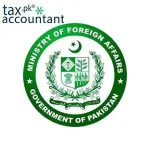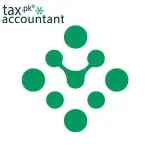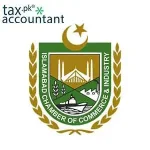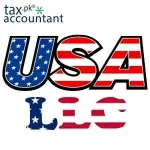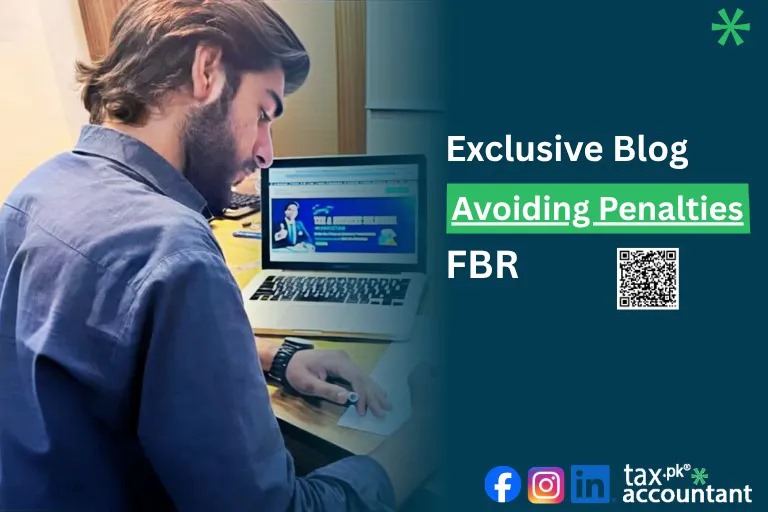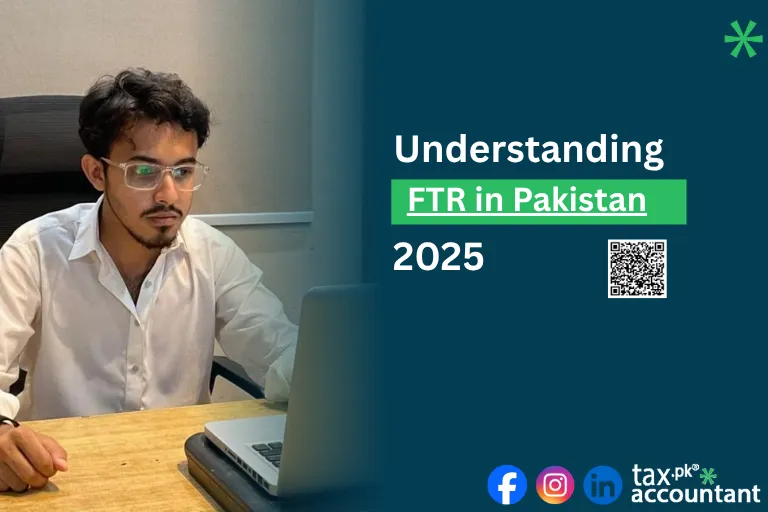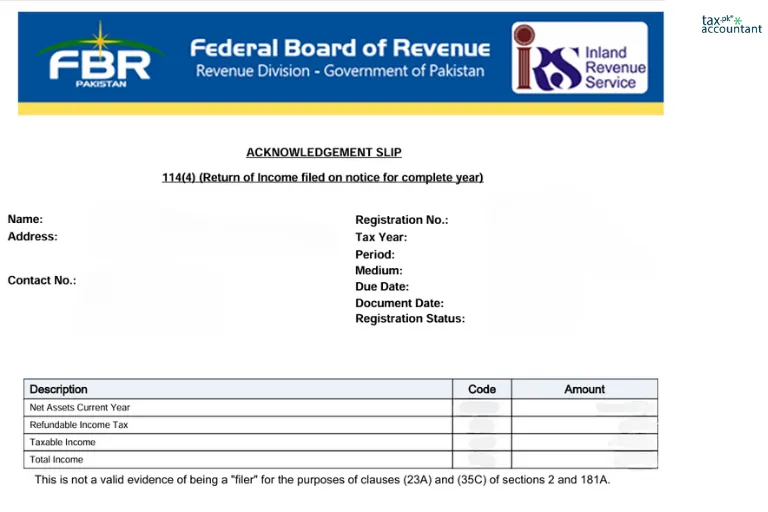Got 221(2) (Notice for rectification of mistake in assessment order) from FBR – What to do?
Got 221(2) (Notice for rectification of mistake in assessment order) from FBR
” Return of income for the tax year mentioned above was filed, which was deemed to be assessed under section 120 of the Income Tax Ordinance, 2001. Perusal of the return reveals that you had adjusted a refund of the prior year against tax liability. The refund adjusted against tax liability needs proper verification and requires your explanation as prima facie no determined refunds are available in your case. You are hereby afforded with an opportunity to provide documentary proof of the said adjustment made therein. In case of non-compliance your adjustment of refund made in income tax return for tax year under consideration will be rejected and tax chargeable will be recovered against your declared income for tax year mentioned above. Your reply should reach the office of the undersigned on or before due
date as mentioned above.
Amount Adjusted Rs. 3,319 “
Got 221(2) Notice from FBR: Understanding and Responding to Rectification of Mistake in Assessment Order
Receiving a notice under section 221(2) of the Income Tax Ordinance, 2001 from the Federal Board of Revenue (FBR) can be unsettling. This notice indicates that the FBR has identified a potential mistake in your income tax assessment and is giving you an opportunity to rectify it.
This article provides a comprehensive guide on understanding the notice, the reasons behind it, and the steps you need to take to respond effectively.
What is a 221(2) Notice?
A notice under section 221(2) of the Income Tax Ordinance, 2001, is a formal communication from the FBR to a taxpayer, informing them of a discrepancy or mistake found in their filed income tax return. This notice is issued when the FBR believes there is a need to rectify an error or omission in the assessment order.
The purpose of this notice is to:
-
Inform the taxpayer about the identified mistake.
-
Provide an opportunity for the taxpayer to explain or provide additional information.
-
Allow the taxpayer to rectify the mistake, if applicable.
-
Ensure compliance with the Income Tax Ordinance, 2001.
Common Reasons for Receiving a 221(2) Notice
Several reasons can trigger the issuance of a 221(2) notice. Some of the most common include:
-
Discrepancies in Income: The FBR might find differences between the income declared in your tax return and the information available to them from other sources (e.g., banks, employers, etc.).
-
Incorrect Application of Tax Laws: Errors in applying tax rates, deductions, or exemptions can lead to a notice.
-
Mismatch in Tax Credits: Discrepancies between the tax credits claimed in the return and the supporting documents can trigger a notice.
-
Arithmetic Errors: Simple calculation mistakes in the tax return.
-
Refund Adjustments: Issues related to the adjustment of prior year refunds against current tax liabilities.
-
Non-Compliance with Record-Keeping Requirements: Failure to maintain proper documentation to support income and deductions claimed.
Analyzing Your 221(2) Notice
Carefully examine the notice you receive from the FBR. Here’s what you should look for:
-
Tax Year: Identify the specific tax year the notice pertains to.
-
Assessment Order Details: Note the reference number and date of the original assessment order.
-
Nature of the Mistake: Understand the exact discrepancy or mistake the FBR has identified.
-
Amount Involved: Take note of the amount in question.
-
Due Date: Mark the deadline for responding to the notice.
-
Required Documentation: Check what documents or information the FBR is requesting.
-
Contact Information: Find the contact details of the FBR officer in charge.
Step-by-Step Guide to Responding to a 221(2) Notice
-
Acknowledge Receipt: Respond to the notice as soon as possible, acknowledging that you have received it.
-
Gather Relevant Documents: Collect all documents that support your original tax return and can address the discrepancy mentioned in the notice. This may include:
-
Salary slips
-
Bank statements
-
Investment records
-
Receipts for deductions and exemptions
-
Prior year tax returns
-
-
Prepare a Detailed Response: Write a formal response to the FBR, addressing each point raised in the notice. Be clear, concise, and provide factual information.
-
If you agree with the FBR: Explain how the mistake occurred and provide corrected information and supporting documents.
-
If you disagree with the FBR: Provide a detailed explanation of why you believe your original tax return was correct, supported by relevant documents.
-
-
Submit Your Response: Send your response and supporting documents to the FBR office mentioned in the notice, ensuring that you do so before the due date. Keep a copy of your response and all submitted documents for your records.
-
Follow Up: If you don’t receive a response from the FBR within a reasonable time, follow up to inquire about the status of your case.
Example Scenario: Responding to a Notice Regarding Refund Adjustment
Let’s consider the scenario presented in the attached image. The notice states that you adjusted a refund from a prior year against your tax liability, and the FBR requires verification and explanation for this adjustment.
Here’s how you can respond:
-
Acknowledge the Notice: Write a letter acknowledging that you received the 221(2) notice.
-
Gather Documentation: Collect the following documents:
-
Copy of the prior year’s tax return showing the refund amount.
-
Copy of the current year’s tax return where you adjusted the refund.
-
Any correspondence from the FBR regarding the prior year’s refund.
-
-
Prepare Your Response: Write a letter explaining the refund adjustment:
“Subject: Response to Notice under Section 221(2) – Tax Year $$Year]
Dear Sir/Madam,
I am writing in response to your notice under section 221(2) of the Income Tax Ordinance, 2001, regarding the adjustment of a prior year refund against my tax liability for the tax year $$Year].
As per my records, I received a refund of Rs. 3,319 from the tax year PriorYear],asreflectedinmytaxreturnforthatyear(copyattached).InmyincometaxreturnforthetaxyearPriorYear],asreflectedinmytaxreturnforthatyear(copyattached).InmyincometaxreturnforthetaxyearYear], I adjusted this refund against my tax liability, as permitted under the Income Tax Ordinance.
To support this adjustment, I am enclosing the following documents:
-
Copy of the tax return for the tax year $$Prior Year] showing the refund amount.
-
Copy of the tax return for the tax year $$Year] where the refund was adjusted.
-
Any relevant correspondence from the FBR regarding the refund.
I believe that the adjustment was made correctly and in accordance with the provisions of the Income Tax Ordinance, 2001. I trust that the information provided clarifies the matter. If you require any further information, please do not hesitate to contact me.
Sincerely,
YourName]∗∗YourName]∗∗Your CNIC]
$$Contact Number]“ -
-
Submit Your Response: Send the letter along with the supporting documents to the FBR office mentioned in the notice.
Importance of Professional Assistance
Tax matters can be complex, and responding to a 221(2) notice requires a thorough understanding of tax laws and procedures. If you find it challenging to understand the notice or prepare an adequate response, consider seeking assistance from a qualified tax professional or consultant. They can provide expert advice and ensure that your response complies with all legal requirements.
Key Considerations and Best Practices
-
Maintain Accurate Records: Keeping detailed and organized records of your income, expenses, and tax-related documents is crucial for responding to any FBR notice.
-
File Tax Returns on Time: Filing your tax returns accurately and on time can reduce the likelihood of receiving a notice.
-
Seek Clarification: If you are unsure about any aspect of your tax obligations, seek clarification from the FBR or a tax professional.
-
Cooperate with the FBR: Cooperating with the FBR and providing all requested information can help resolve issues quickly and efficiently.
Potential Consequences of Non-Compliance
Ignoring a 221(2) notice or failing to respond adequately can have serious consequences, including:
-
Rejection of Adjustments: The FBR may reject any adjustments or claims made in your tax return.
-
Additional Tax Liability: You may be required to pay additional taxes, along with penalties and interest.
-
Audit: The FBR may initiate a detailed audit of your tax affairs.
-
Legal Action: In severe cases of non-compliance, the FBR may take legal action against you.
Navigating the FBR System
Dealing with the FBR can be challenging, but understanding the system and following the correct procedures can make the process smoother. Here are some tips for navigating the FBR system:
-
Use Online Resources: The FBR website provides a wealth of information on tax laws, procedures, and forms.
-
Attend Tax Seminars: The FBR often conducts seminars and workshops to educate taxpayers about their rights and obligations.
-
Maintain a Professional Demeanor: When interacting with FBR officials, maintain a professional and respectful demeanor.
-
Document Everything: Keep a record of all communications with the FBR, including letters, emails, and phone calls.
Summary of Actions to Take
| Action | Description |
|---|---|
| Review the Notice | Carefully read and understand the details of the 221(2) notice, including the tax year, mistake, and due date. |
| Gather Documents | Collect all relevant documents that support your original tax return and address the discrepancy mentioned. |
| Prepare a Response | Write a detailed and factual response to the FBR, addressing each point raised in the notice. |
| Submit Your Response | Send your response and supporting documents to the FBR office before the due date, and keep a copy for your records. |
| Seek Professional Assistance (Optional) | If needed, consult with a qualified tax professional or consultant for expert advice and assistance. |
| Follow Up | Inquire about the status of your case if you don’t receive a response from the FBR within a reasonable time. |
Conclusion
Receiving a 221(2) notice from the FBR doesn’t have to be a cause for panic. By understanding the nature of the notice, taking the necessary steps to respond, and seeking professional assistance when needed, you can effectively address the issue and ensure compliance with the Income Tax Ordinance, 2001. Remember to act promptly, provide accurate information, and maintain proper documentation to facilitate a smooth resolution.
About Umair A R Mughal
Umair A R Mughal is a unique professional who seamlessly blends the worlds of technology, finance, and regulatory compliance. With a solid foundation as a Chartered Accountant and a passion for technology, Umair offers comprehensive solutions that cater to the evolving needs of businesses in Pakistan.
View all posts by Umair A R Mughal



